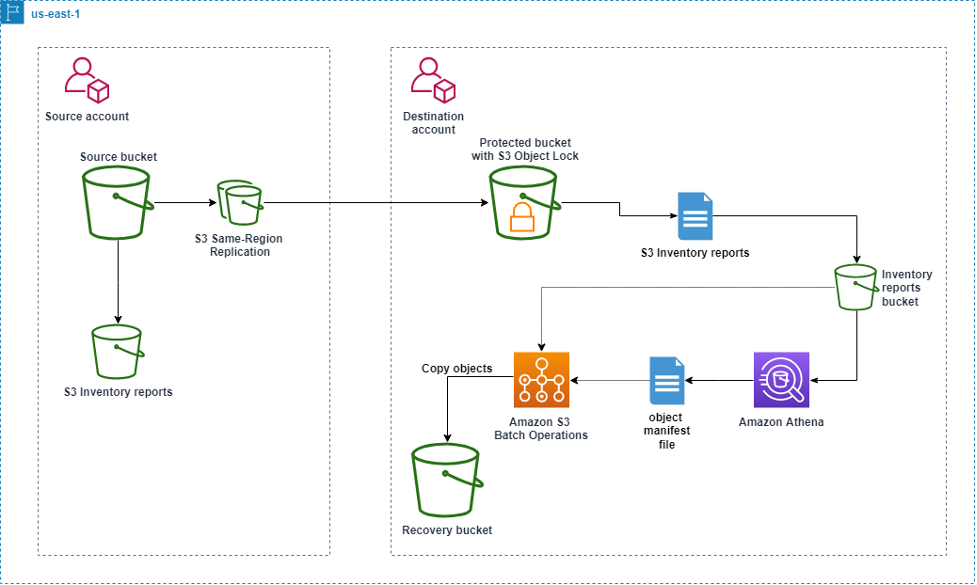Stop Worrying About Data Storage: How Amazon S3 Powers Modern Business and Saves You Money
Let’s face it: The hype cycle is real. Everyone’s chasing the shiny new toy—Generative AI models, real-time data pipelines, and low-latency systems. We all celebrate the “brains” of the cloud, that massive computing power.
But here’s the crucial, often-ignored truth: none of that cutting-edge innovation happens if you don’t have a secure, infinitely scalable, and utterly trustworthy place to put the files.
The real workhorse, the foundational service that silently keeps the entire digital economy running, is Amazon Simple Storage Service (Amazon S3).
S3 isn’t just a place to dump files. It’s the ultimate digital vault and global logistics center for your entire data inventory. When AWS introduced it in 2006, they didn’t just offer cloud storage; they invented the modern standard for object storage, finally freeing developers from the absolute nightmare of constant disk management.

The Engineering Guarantee: The Confidence to Stop Worrying
Why do our architects—and the largest companies in the world—stake their reputations on S3? It all comes down to two specs that fundamentally change how we think about risk and scale:
The Legendary “Eleven Nines” of Durability
When we talk about data safety, S3 offers a staggering 99.999999999% durability. We call it eleven nines. This isn’t just marketing copy; it’s a commitment based on physics. Statistically, if you stored ten million objects, you’d expect to lose one of them every hundred thousand years.
How do they pull this off? S3 continuously and synchronously replicates your data across at least three geographically separate data centers within a region. It’s the ultimate “set it and forget it” data safety net. You literally stop losing sleep over disk failure, bit rot, or physical hardware catastrophes. That peace of mind is the true ROI.
Truly Infinite Capacity, Simple HTTP Access
As developers, the highest compliment we can give a service is that it “just works.” S3 has no practical capacity limit—ever. As your application grows from gigabytes to petabytes, the storage layer simply scales to meet you.
Your developers interact with it via a simple REST API—just standard HTTP calls (PUT, GET, DELETE). This stateless design is the key to its power, allowing it to integrate flawlessly with every programming language and framework on the planet. You’re talking to a highly flexible data endpoint, not a fussy server.
Real-World Headaches S3 Solves for Our Clients
The magic of S3 is revealed when we look at the messy, complex architectural problems it effortlessly simplifies:
- Taming the Data Mess (The Unified Data Lake)
Modern data is a polyglot of formats: structured tables, messy semi-structured JSON logs, and completely unstructured documents, photos, and video. S3 is entirely format agnostic. It is the only cost-effective place to consolidate all of this into one central, powerful Data Lake.
This is huge. It allows modern tools like Amazon Athena to instantly query petabytes of that raw data using standard SQL—in place—without any costly data movement or pre-processing. It’s how we turn overwhelming, siloed chaos into clear, actionable business intelligence.
- The Smartest Cost Optimizer: Intelligent Tiering
It’s impossible to perfectly predict data access. You store a file thinking it’ll be a high-traffic asset, and then it sits unused for months. S3’s Intelligent-Tiering solves this financial guessing game. It automatically monitors access patterns and silently shifts infrequently used data to cheaper storage classes (like Glacier) to lower your bill. And if that file suddenly gets hot, S3 automatically pulls it back. You save money without writing a single line of code.
- The Fuel Injection for AI/ML
Data scientists are expensive, and they famously spend 80% of their time on data wrangling. By standardizing on S3, we create the clean, high-speed input/output layer that feeds massive, version-controlled training datasets directly to services like Amazon SageMaker. This deep integration frees up your most valuable talent to focus purely on building models, not on managing file system infrastructure.
- The Automation Superpower: Event-Driven Design
This is the secret sauce of modern serverless architecture. When a new object lands in an S3 bucket (a customer invoice, an image upload), that action instantly fires an S3 Event Notification.
This notification can immediately trigger an AWS Lambda function to act. Picture this: a customer uploads a photo, and S3 triggers Lambda to resize it, run OCR, compress the original, and update a metadata table—all within seconds, with zero server management. That’s instant, reactive automation.
The Reality Check: Knowing When to Use Something Else
We are trustworthy architects, so we have to be clear: S3 is the cornerstone, but it’s not a magic hammer for every nail.
It’s Not a Database: S3 is object storage, which is optimized for high durability and massive scale, but it is not a general-purpose hard drive. It has higher latency and lacks the file-locking mechanisms required for constant, high-speed transactional workloads (like running an OS, complex financial databases, or high-performance computing). For those jobs, you need a different tool, like Amazon EBS or DynamoDB.
The Egress Cost Warning: Storing data is incredibly cheap. However, moving large amounts of data out of AWS (egress) or transferring data between different AWS regions is where the cost can unexpectedly escalate. The golden rule of cloud architecture is: Ingest freely, process and store cheaply, and minimize Egress. Do your heavy lifting inside the AWS ecosystem.
Why We Make S3 Your Foundation
At the end of the day, Amazon S3 is a masterpiece of engineering. Its unmatched resilience, intelligent cost management, and seamless integration with the entire AWS toolkit allow us to permanently take the most difficult problem—data gravity and safety—off the table.
If you are building massive scale, true innovation, and long-term resilience, S3 isn’t an option; it must be your primary choice for the data foundation. It simplifies the infrastructure so your team can focus entirely on creating business value.

Amazon S3 Architecture Diagram
Frequently Asked Questions about Amazon S3:
Q1: What makes S3 different from traditional storage?
Unlike block or file storage, S3 is object storage, meaning each file is stored with metadata and a unique ID, enabling massive scalability and easy retrieval.
Q2: Can I host a website using Amazon S3?
Yes. S3 can host static websites with HTML, CSS, and JavaScript, combined with CloudFront for global content delivery.
Q3: How does S3 ensure data durability?
Data is automatically replicated across multiple facilities and devices within an AWS region, providing 11 nines durability.
Q4: Is S3 suitable for real-time data access?
For high-frequency access, S3 integrates with Amazon CloudFront or S3 Express One Zone to minimize latency.
Q5: How secure is my data on S3?
Extremely secure. You can enable encryption (SSE-S3, SSE-KMS), access logging, and MFA delete for complete data protection.
ThirdEye Data’s Take: S3 is Non-Negotiable
At ThirdEye Data, we don’t just use Amazon S3; we rely on it. We view it as the unshakeable cornerstone of any cloud project worth its salt.
Its ability to effortlessly scale from a single file to petabytes, its intelligent cost management, and its seamless integration with the entire AWS toolkit means that it doesn’t just store data—it accelerates innovation. It liberates our developers and data scientists from infrastructure headaches, allowing them to focus entirely on creating business value: delivering predictive models, automating processes, and engineering efficient, robust data pipelines.
Our Recommendation: If you’re serious about building a future-proof, cost-effective, and highly scalable data lake, AI pipeline, or global application, Amazon S3 isn’t just a choice—it’s the only starting line. It is the resilient, versatile, and highly cost-effective backbone of the modern, data-driven enterprise.




